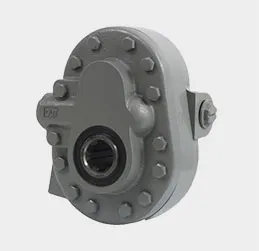Designing Efficient Molds for Enhanced Die Casting Performance and Precision
The Importance of Die Design in Die Casting
Die casting is a manufacturing process that allows for the production of complex shapes and high-precision components with excellent surface finishes. Central to this process is die design, which involves the creation and optimization of the molds used to form the products. Effective die design is crucial in ensuring efficiency, quality, and overall success of die casting operations. This article will discuss the critical aspects of die design, including materials, geometric considerations, and the role of technology in shaping modern die casting processes.
Understanding Die Casting
Before delving into die design, it's essential to understand the die casting process itself. In essence, die casting involves forcing molten metal into a mold cavity at high pressure. Once cooled, the mold is opened to release the cast part. This method is suitable for producing metal parts in large volumes, making it a popular choice in various industries, including automotive, aerospace, and consumer goods.
Key Considerations in Die Design
1. Material Selection The choice of materials used in die design significantly affects the performance and lifespan of the die. Common die materials include tool steel, aluminum, and beryllium copper. Tool steel, for instance, is often favored for its hardness and wear resistance, which make it suitable for high-volume production. Furthermore, the thermal conductivity of the die material influences the cooling rates of the cast part, impacting its quality and production speed.
2. Geometric Complexity One of the primary advantages of die casting is its ability to produce complex geometries. Thus, die design must accommodate the desired shape while ensuring that factors such as draft angles, wall thickness, and rib designs are optimized. Draft angles facilitate the ejection of parts from the die, while uniform wall thickness helps prevent defects like warping and cracking. Geometric features such as ribs can enhance strength without adding unnecessary weight, maximizing efficiency in production.
3. Cooling Systems Effective cooling is vital in die casting, as it affects cycle times and part quality. Die designers must incorporate efficient cooling channels within the die to ensure even heat distribution. The design of these channels must consider not only the placement and size but also the material flow patterns during casting. Proper cooling can significantly reduce defects such as surface blemishes and dimensional inaccuracies.
die casting die design

4. Ejection Mechanisms Once the metal has cooled and solidified, it needs to be accurately ejected from the die. The ejection system must be designed to apply the appropriate force without damaging the cast part. Various types of ejection mechanisms, such as pins, plates, and hydraulic actuators, can be used, depending on the complexity and geometry of the part.
5. Quality Control and Testing As part of the die design process, implementing robust quality control measures is imperative. This includes performing finite element analysis (FEA) to predict how the die will perform under different conditions. Temperature, pressure, and material flow can all impact the die’s performance, and simulation tools help in identifying potential issues before they arise.
The Role of Technology in Die Design
Advancements in technology have transformed die design, allowing for greater precision and efficiency. Computer-aided design (CAD) software enables designers to create and manipulate die geometries in a virtual environment, facilitating rapid prototyping and testing. Additionally, additive manufacturing technologies are being explored as a means of producing complex die components with intricate cooling channels or features that were once impossible with traditional methods.
Furthermore, the integration of digital twins in the manufacturing process allows for real-time monitoring and optimization of die performance. By collecting data during production, manufacturers can adjust processes dynamically, improving product quality and reducing downtime.
Conclusion
In summary, effective die design is paramount in the die casting process, significantly influencing production efficiency, part quality, and overall operational success. By considering factors such as material selection, geometric design, cooling systems, and modern technological advancements, manufacturers can create optimized dies that enhance the performance of the entire die casting operation. As industries continue to evolve, the importance of innovative die design will only increase, driving the future of precision casting and manufacturing.
-
Aluminium Pressure Die Casting High-Precision & Durable Solutions for Complex PartsNewsJul.08,2025
-
Top Aluminum Sand Castings Manufacturer – Precision Green Sand Castings for Industrial NeedsNewsJul.08,2025
-
Precision Lost Wax Casting Quotes – High Accuracy Custom Parts Lost Wax Precision Casting ServicesNewsJul.07,2025
-
High-Quality Sand Used for Casting - Superior Sand for Sand Casting ProcessesNewsJul.07,2025
-
China Supply High End Metal Stamping Parts Sino - Precision Manufacturing FactoryNewsJul.06,2025
-
High-Quality Automotive Investment Casting Services Precision & Sand Casting SolutionsNewsJul.06,2025















